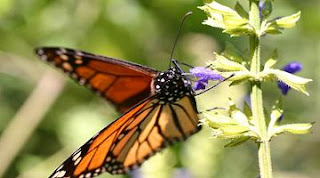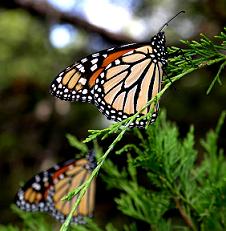Every year Monarch Butterflies unfurl their wings and flutter about in search of a sanctuary...
Monarch butterflies start their enigmatic annual migration during the months of September and October, as the temperature in U.S. and Canada begins to drop.
Millions of butterflies fly into México from the U.S. and Canada to congregate in different localities high in the pine and fir forests of the beautiful state of Michoacán.
After their arrival, they spend the winter in a semi-dormancy state in these forests that have become their sanctuary.
During the months of February and March, as the early spring sunlight penetrates the fir tree forests, the monarch butterflies unfurl their wings and fly on a search of food, water, and a mate.
On late March or early April, they begin to leave the reserves. The females lay hundreds of eggs a few days later in the north of México and the south of U.S. Soon, a new generation of butterflies emerges to fly further north.
Scientists are still amazed and can’t explain this enigmatic annual migration. No one knows for sure how newer generations of these butterflies can return to the exact same fir forests which their ancestors left in April of four or five years past.
Scientists are still amazed and can’t explain this enigmatic annual migration. No one knows for sure how newer generations of these butterflies can return to the exact same fir forests which their ancestors left in April of four or five years past.
Monarch butterflies are native to North América, but they have found their way around the world and you can see them in Hawaii, Samoa, Australia, Tonga, and New Zealand.
The exact sites where these butterflies overwinter were found around 1970, after a search that lasted almost forty years. Some of the reserves in Michoacán are in El Rosario, Ocampo, near the town of Angangeo, and the Sierra Chincua sanctuary which opened to the public in 1997 and is also a short distance from Angangeo.
The best time to visit the sanctuaries is in February when Ocampo and Zitácuaro celebrate the Festival de la Mariposa Monarca with traditional dances, music, food and a handicrafts market.
Note:Photograph # 1 is the work of drumguy8800 - obtained at Wikipedia.
Photo # 2 is the work of Diego Serebriski, also taken from Wikipedia.
Photo # 3 I do not have the name of the photographer.


